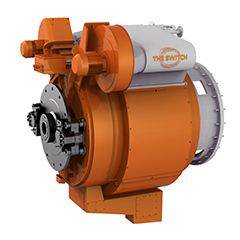As president and CEO of The Switch, Jukka-Pekka Mäkinen heads-up one of the industry’s most pioneering companies. With a focus on drive train technology for renewable and industrial applications, the organisation is highly visible in the solar, marine and – of course – wind sectors. One of PES magazine’s original interviewees, he returns for an illuminating Q&A.
PES: Welcome back to PES. It’s been a while since we last spoke – how has the company evolved in the last few years? And how has business been? Where are you seeing signs of growth right now?
Jukka-Pekka Mäkinen: The Switch wants to demonstrate that wind power energy can be produced cost effectively with advanced technology. The company’s success is largely due to its advanced permanent magnet generator (PMG) technology, which has enabled the company to become a pioneer in the international wind power market.
The Switch strongly believes that renewable energy offers a solution to future energy needs. To become a reality, the most important factor is to produce high quality energy at the lowest possible cost. With wind power, quality is more important than quantity.
We are committed to increase the annual energy production of wind power and to minimise associated total life cycle costs. Permanent magnet generator technology is advantageous for the wind power market, because it offers high reliability and requires less maintenance than conventional methods. PMG-based technology is also able to produce energy more efficiently at lower wind speeds. Therefore, 1.5-7% more energy can be produced per year.” By continuously developing the reliability of energy generation equipment, it is possible to enhance cost efficiency.
Crowning off the successful achievements to date, The Switch successfully commissioned its 8+ MW PMG, which is intended to be used offshore. The massive drive train component that features a medium-speed, rear-mounted PMG design brings together the best of both low- and high-speed technology, offering extremely high availability and reliability, and resulting in increased annual energy production, particularly at partial loads.



























